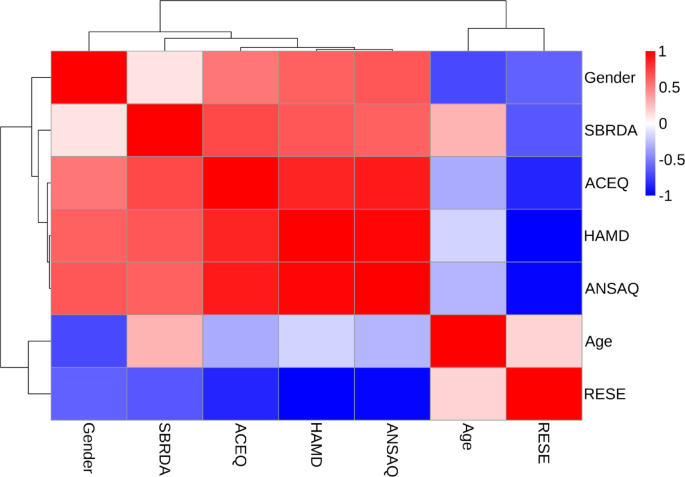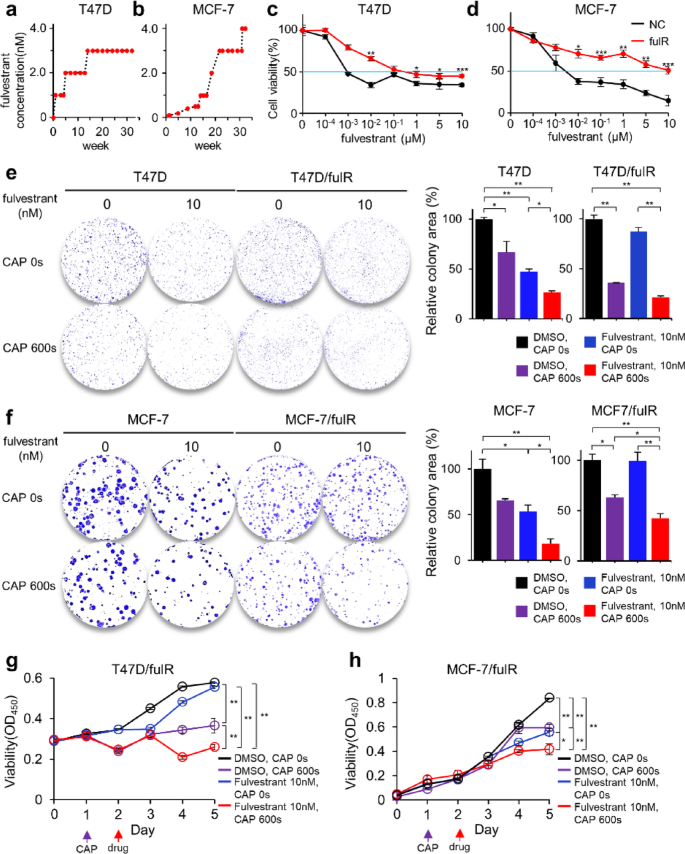Report on the Mediating Factors Between Adverse Childhood Experiences and Non-Suicidal Self-Injury in Adolescents
Executive Summary
This report details a study on the mechanisms linking Adverse Childhood Experiences (ACEs) with Non-Suicidal Self-Injury (NSSI) among 257 adolescents with first-episode Major Depressive Disorder (MDD) in China. The findings reveal that Biological Rhythm Disorder (BRD) and the severity of depression sequentially mediate the relationship between ACEs and NSSI. This research directly informs strategies for achieving Sustainable Development Goal 3 (Good Health and Well-being), particularly Target 3.4 concerning mental health, and underscores the importance of SDG 16 (Peace, Justice and Strong Institutions), specifically Target 16.2, which aims to end all forms of violence against children. The study concludes that interventions targeting biological rhythms can mitigate depression severity and prevent NSSI, offering a tangible pathway to advance global health and child protection goals.
1.0 Introduction and Alignment with Sustainable Development Goals (SDGs)
Non-suicidal self-injury (NSSI) among adolescents represents a significant global public health challenge, directly impeding progress toward SDG 3 (Good Health and Well-being). The high prevalence of NSSI, particularly in adolescents with psychiatric disorders, undermines efforts to promote mental health and well-being for all ages. This issue is often rooted in early life adversity, linking it inextricably to SDG 16 (Peace, Justice and Strong Institutions), which calls for the elimination of abuse, neglect, and violence against children (Target 16.2).
1.1 Problem Statement in the Context of SDGs
- SDG 3: Good Health and Well-being: NSSI is a predictor of severe adverse outcomes, including suicidal behavior, which conflicts with the goal of reducing premature mortality and promoting mental health.
- SDG 16: Peace, Justice and Strong Institutions: Adverse Childhood Experiences (ACEs), such as abuse and neglect, are violations of a child’s right to protection and are a primary risk factor for NSSI. Addressing ACEs is fundamental to achieving peaceful and inclusive societies.
- SDG 10: Reduced Inequalities: ACEs are often linked to household dysfunction and socioeconomic instability, highlighting how inequality can perpetuate cycles of trauma and poor health outcomes.
1.2 Research Objectives
This study aimed to investigate the physiological and psychological pathways through which ACEs influence NSSI in adolescents with MDD. The central hypothesis was that Biological Rhythm Disorder (BRD) and depression severity act as sequential mediators in this relationship, providing critical insights for developing targeted interventions aligned with the SDGs.
2.0 Methodology
2.1 Participant Cohort
A total of 257 adolescents (mean age 15.66 years; 72.4% female) diagnosed with first-episode MDD were recruited from a tertiary hospital in China. All participants were treatment-naïve.
2.2 Assessment Measures
A comprehensive assessment was conducted using validated questionnaires to measure key variables:
- Adverse Childhood Experiences (ACEs): Measured with the Adverse Childhood Experiences Questionnaire (ACEQ).
- Biological Rhythm Disorder (BRD): Assessed using the Self-Rating of Biological Rhythm Disorder for Adolescents (SBRDA).
- Depression Severity: Evaluated by clinicians using the 24-item Hamilton Depression Rating Scale (HAMD-24).
- Non-Suicidal Self-Injury (NSSI): Assessed with the Adolescent Non-suicidal Self-Injury Assessment Questionnaire (ANSAQ).
2.3 Statistical Analysis
Pearson’s correlations were used to examine relationships between variables. A sequential mediation analysis, controlling for demographic and psychological covariates, was performed using the PROCESS Macro in SPSS to test the hypothesized model.
3.0 Key Findings
3.1 Correlation Analysis
Significant positive correlations were identified among all primary variables, underscoring their interconnectedness:
- ACEs were positively associated with BRD, depression severity, and NSSI.
- BRD was positively associated with depression severity and NSSI.
- Depression severity was strongly and positively associated with NSSI.
3.2 Sequential Mediation Model Results
The analysis confirmed that the impact of ACEs on NSSI is not solely direct but is channeled through intermediate factors. The findings support a sequential mediation pathway:
ACEs → Biological Rhythm Disorder → Depression Severity → NSSI
This pathway demonstrates that ACEs contribute to disruptions in biological rhythms, which in turn exacerbate depressive symptoms, ultimately leading to an increased likelihood of NSSI behaviors. This finding highlights a critical intervention point for disrupting the trajectory from childhood adversity to self-harm, directly supporting the preventative aims of SDG 3 and SDG 16.
4.0 Discussion and Policy Implications for SDGs
4.1 Pathophysiological Insights and SDG Linkages
The study elucidates a critical mechanism through which failures to meet SDG 16.2 (protecting children from violence and trauma) directly undermine SDG 3.4 (promoting mental health). ACEs disrupt fundamental physiological processes, such as biological rhythms, which then precipitate severe mental health conditions like MDD and associated behaviors like NSSI. This connection reinforces the need for integrated policy approaches that recognize child protection as a cornerstone of public health.
4.2 Recommendations for Intervention and Policy
To accelerate progress on the SDGs, the following evidence-based actions are recommended:
- Integrate Mental Health Screening with Child Protection Services: In line with SDG 16, proactively identify children exposed to ACEs and provide immediate mental health support, including screening for BRD and depression.
- Develop and Implement BRD-Targeted Interventions: Promote interventions focused on stabilizing biological rhythms (e.g., sleep hygiene education, structured daily routines, light therapy) as a low-cost, high-impact strategy to reduce depression severity and NSSI risk, advancing SDG 3.
- Strengthen School-Based Mental Health Programs: Equip schools to recognize and support adolescents with MDD and those affected by ACEs, ensuring access to care and reducing stigma. This contributes to SDG 4 (Quality Education) by fostering safe and healthy learning environments.
- Address Gender Disparities: Given the high proportion of female participants, policies must consider the gender-specific dimensions of mental health, aligning with SDG 5 (Gender Equality).
5.0 Conclusion
This report confirms a significant pathway from adverse childhood experiences to non-suicidal self-injury, mediated by biological rhythm disruption and depression severity. These findings provide a compelling, evidence-based argument for the interconnectedness of the Sustainable Development Goals. Protecting children from harm (SDG 16) is not only a matter of justice but a prerequisite for ensuring good health and well-being (SDG 3). By focusing on modifiable factors like biological rhythms, policymakers and healthcare providers can implement effective, targeted interventions that mitigate the long-term consequences of childhood adversity and build a healthier, more sustainable future for all.
Analysis of Sustainable Development Goals in the Article
1. Which SDGs are addressed or connected to the issues highlighted in the article?
-
SDG 3: Good Health and Well-being
- The article’s primary focus is on mental health, specifically non-suicidal self-injury (NSSI) and major depressive disorder (MDD) in adolescents. It investigates the prevalence, risk factors, and underlying mechanisms of these conditions, directly aligning with the goal of ensuring healthy lives and promoting well-being for all at all ages. The study aims to contribute to the “early identification of at-risk populations and the implementation of timely preventive measures,” which is central to SDG 3.
-
SDG 16: Peace, Justice and Strong Institutions
- The article extensively discusses Adverse Childhood Experiences (ACEs) as a significant risk factor for both MDD and NSSI. ACEs are defined to include “emotional, physical, or sexual abuse and neglect to parental separation or divorce and family or community violence.” This directly connects the research to the goal of protecting children from abuse, violence, and exploitation, which is a key component of building peaceful and inclusive societies.
2. What specific targets under those SDGs can be identified based on the article’s content?
SDG 3: Good Health and Well-being
-
Target 3.4: By 2030, reduce by one third premature mortality from non-communicable diseases through prevention and treatment and promote mental health and well-being.
- The article directly addresses the promotion of mental health and well-being. It explores the pathophysiology of NSSI, a “significant public mental health issue,” to develop better “preventive measures.” The conclusion that “improving biological rhythms in adolescents with MDD who experience ACEs could help decrease the severity of depression and prevent them from engaging in NSSI behaviors” provides a clear pathway for interventions aimed at promoting mental health in a vulnerable population.
SDG 16: Peace, Justice and Strong Institutions
-
Target 16.2: End abuse, exploitation, trafficking and all forms of violence against and torture of children.
- The article identifies ACEs, which encompass various forms of violence and abuse against children, as a primary driver of negative mental health outcomes. It states, “ACEs are potentially traumatic events that occur in childhood, ranging from emotional, physical, or sexual abuse and neglect to… family or community violence.” By establishing a direct link between these experiences and the increased risk of NSSI, the study underscores the urgent need to address and eliminate childhood abuse and violence to protect long-term health and well-being, aligning perfectly with the objective of Target 16.2.
3. Are there any indicators mentioned or implied in the article that can be used to measure progress towards the identified targets?
Indicators for Target 3.4 (Promote mental health and well-being)
- Prevalence and Severity of Depression: The article explicitly uses the 24-item Hamilton Depression Rating Scale (HAMD-24) to assess the “severity of depression.” The scores from this scale serve as a direct quantitative indicator of the mental health status of the adolescent population studied.
- Prevalence and Severity of Non-Suicidal Self-Injury (NSSI): The study employs the Adolescent Non-suicidal Self-Injury Assessment Questionnaire (ANSAQ) to measure NSSI. The article notes that “Elevated scores suggest increased severity of NSSI behaviors.” This provides a specific metric to track the prevalence and intensity of self-harming behaviors, which are critical for evaluating the success of mental health interventions.
- Prevalence of Biological Rhythm Disorder (BRD): The article uses the Self-Rating of Biological Rhythm Disorder for Adolescents (SBRDA) to assess BRD, a key mediating factor. The scores from this questionnaire can be used as an indicator to measure a factor that influences mental health outcomes.
Indicators for Target 16.2 (End all forms of violence against children)
- Prevalence of Adverse Childhood Experiences (ACEs): The article uses the Adverse Childhood Experiences Questionnaire (ACEQ) to measure exposure to 14 categories of childhood adversity, including “emotional abuse, physical abuse, sexual abuse, emotional neglect, physical neglect, interparental violence,” and “exposure to community violence.” The overall ACE score, ranging from 0 to 14, serves as a direct indicator of a child’s exposure to various forms of abuse and violence. The article highlights the cumulative effect, noting that the likelihood of NSSI increases with the number of ACEs, making this score a powerful indicator for tracking progress in ending violence against children.
4. Create a table with three columns titled ‘SDGs, Targets and Indicators” to present the findings from analyzing the article.
| SDGs | Targets | Indicators |
|---|---|---|
| SDG 3: Good Health and Well-being | Target 3.4: Promote mental health and well-being. |
|
| SDG 16: Peace, Justice and Strong Institutions | Target 16.2: End abuse, exploitation, and all forms of violence against children. |
|
Source: nature.com







